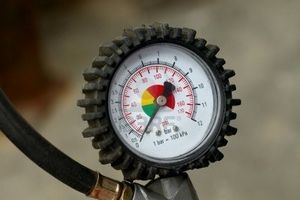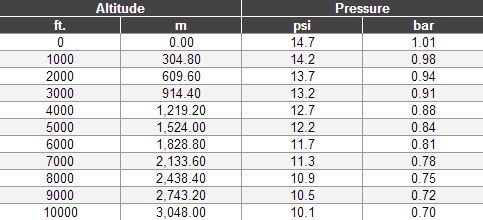Pressure variation: Altitude and temperature

Predicting how tyre pressure will react to a trip to altitude might be hard in the beginning. But this information is useful if you want to keep the same level of performance.
Before you go about climbing mountains with your car, take the time to learn a couple of things about tyres and altitude.
First, atmospheric pressure depends on the altitude you are at. The higher you are, the smaller the pressure.
If you inflate your tyres at 34 psi at sea level, the pressure inside the tyre will go up along with the rise in altitude. It is explained by the fact that outside air will not exert as much pressure as at sea level.
What is more, with altitude, the air gets colder .
Air is a gas, it obeys specific laws. One of these laws states that when the temperature of a gaz decreases, the gas contracts, will leads to a decrease in pressure.
So when the outside temperature decreases, the temperature inside the tyre decreases too, leading to a lower pressure value
Those two phenomenon tend to compensate.
So that between low and high altitude, tyre pressure remains essentially the same (but you might have to get equipped with winter tyres or snow chains).




